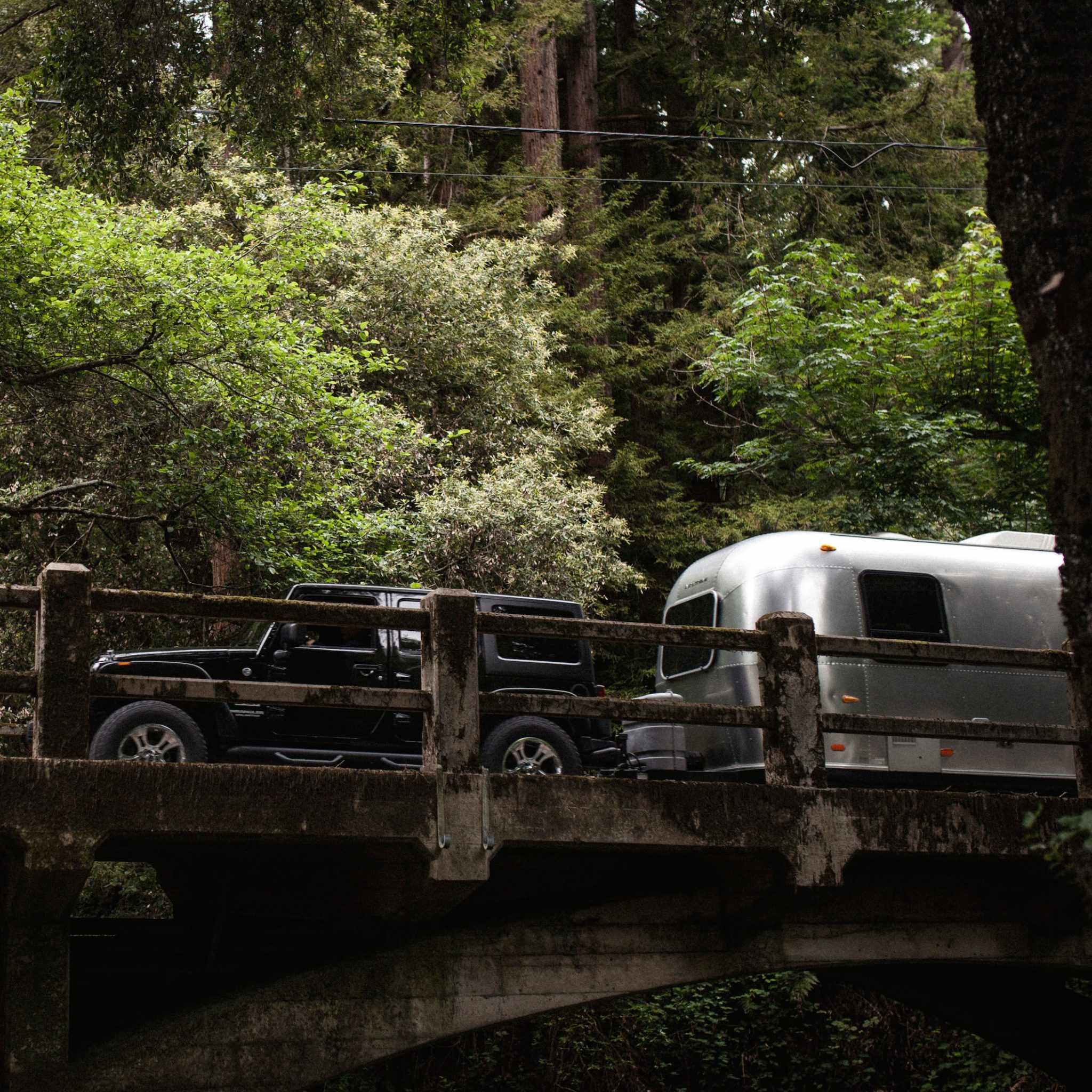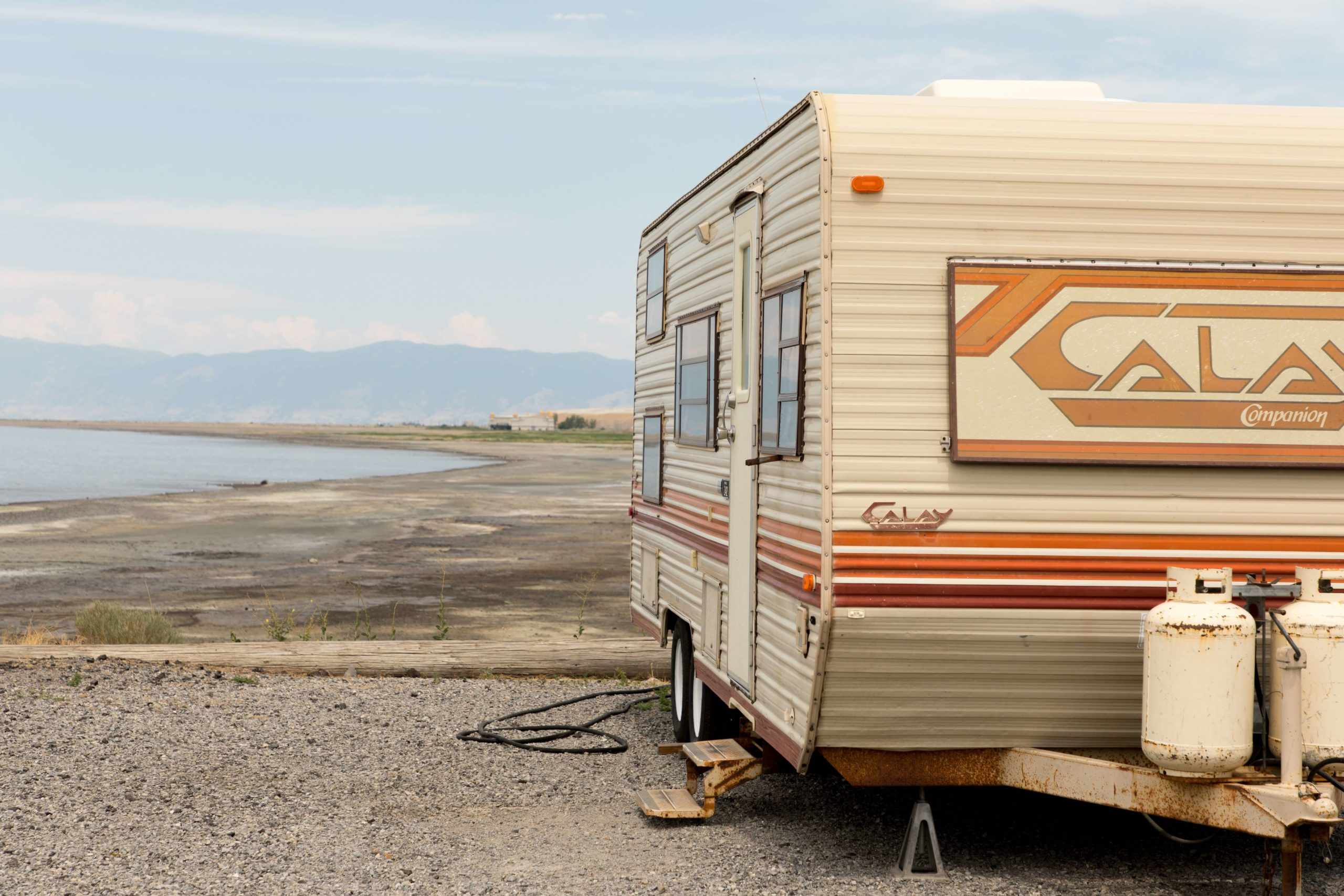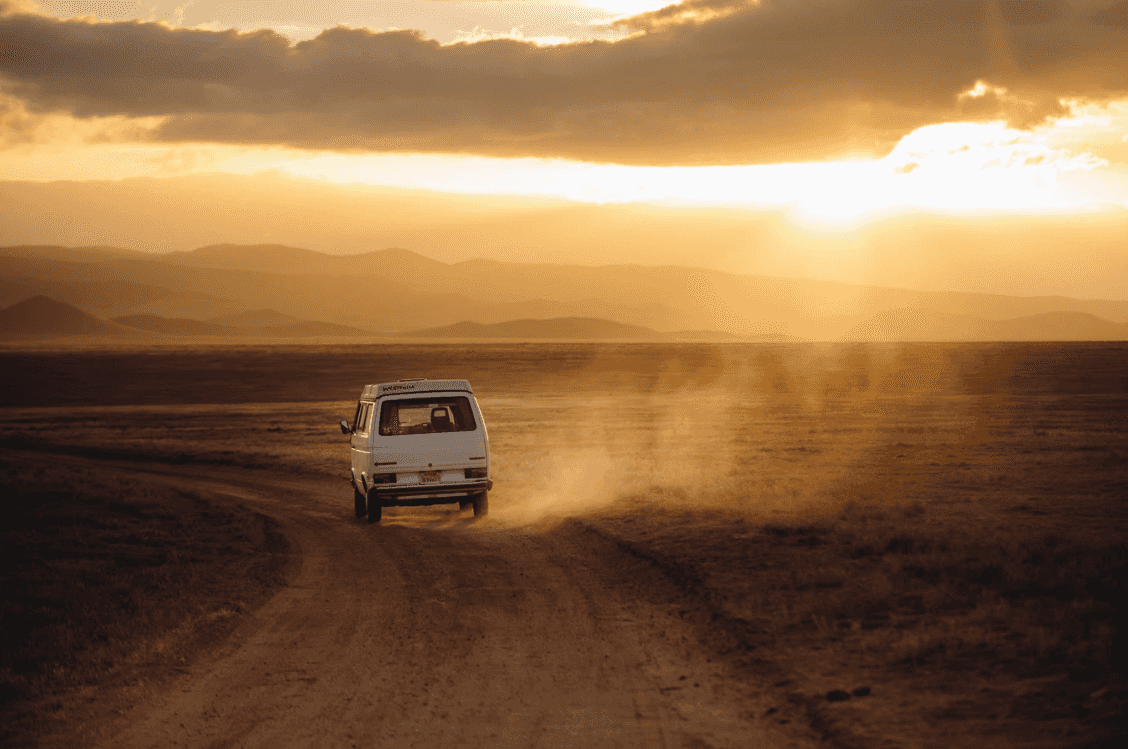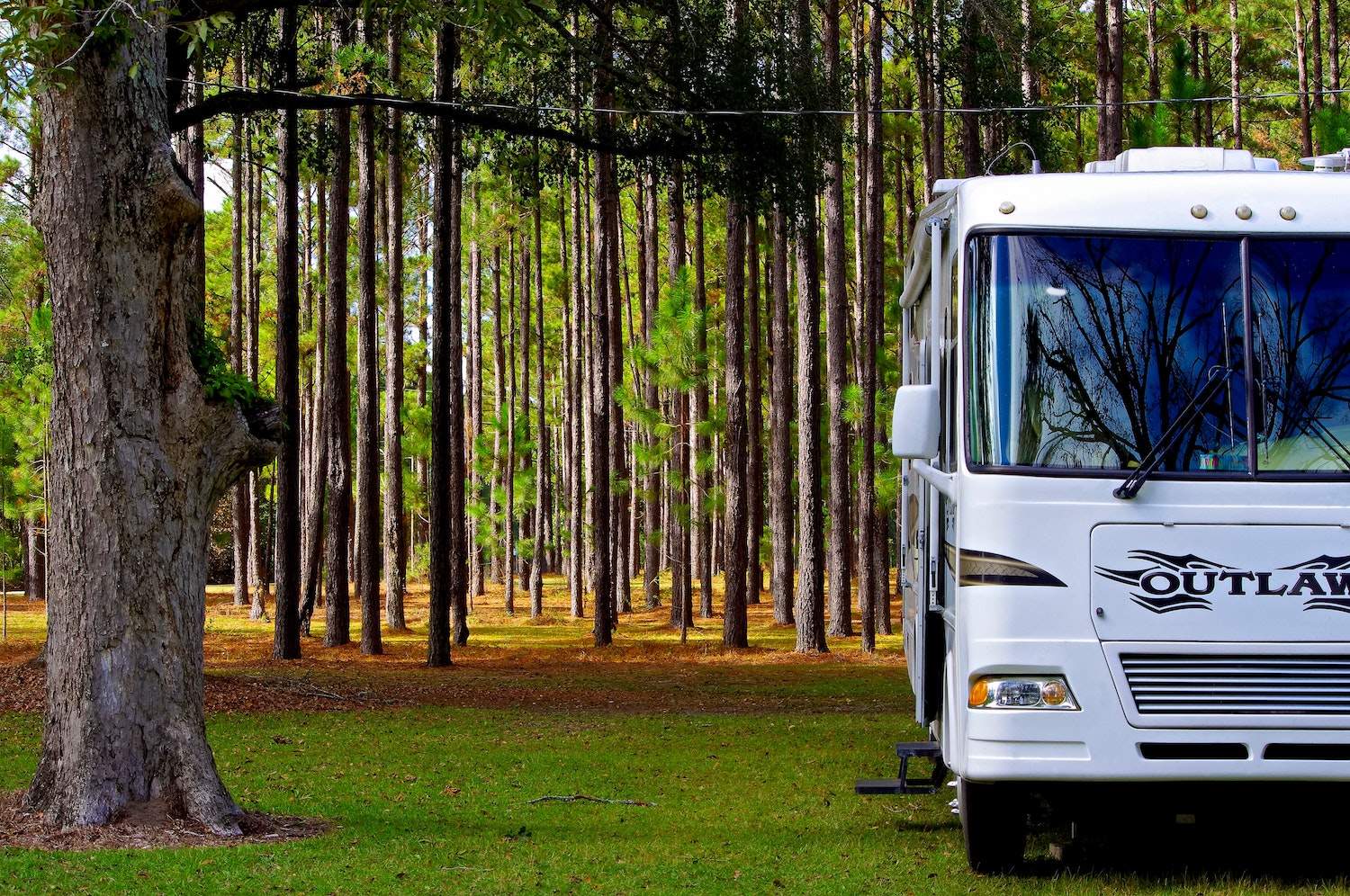RVing has surged in popularity since 2020. RV spots — on the other hand — haven’t exactly surged in availability. The result is a general scarcity of established camping spots relative to the number of people looking for them.
But just because established campgrounds are experiencing record bookings doesn’t mean you can’t enjoy epic RV camping. The ability to camp without hookups — aka boondocking — opens the door to hundreds of millions of acres of pristine camplands.
This post is your ultimate guide to boondocking. It’ll get you everything you need to know like what tools you’ll need for boondocking, how to find boondocking campsites, which types of RVs to take boondocking, and much more.
Let’s get you rolling so you can start exploring even when RV parks are booked.
Boondock Ready RVs For Rent Near You
What Is Boondocking?
Boondocking is camping without hookups. When boondocking, you’ll depend only on your onboard water, electrical, and sewer systems. Rather than plugging in and enjoying most RV parks’ abundant power and water, you’ll need to be deeply acquainted with your RV and its limits.
Boondocking can occur in many places — from national forests to Bureau of Land Management (BLM) lands to Wal-Mart parking lots to friend/family driveways and more.
Boondocking sites are almost always free, almost always first come first serve, rarely require (or even take) reservations, and can feature million-dollar views.
The term dry camping differs slightly from boondocking in the sense that dry camping usually occurs at an established RV park. Even though dry camping is still camping without hookups, it is usually more costly because you’ll benefit from amenities like shower facilities and WiFi offered at the park.
Boondocking — on the other hand — usually refers to unplugged camping in off-the-beaten-path locales.
Questions To Ask Yourself Before You Boondock
Boondocking isn’t necessarily difficult, but it does require a different level of skill and preparedness than traditional RV park camping. Here are some important questions to ask yourself:
- Is your RV ready for boondocking? In order to be boondockable, an RV should have — at a minimum:
- Enough batteries to power 1-2 days of lights, water pump use, and propane heat.
- Freshwater, gray water, and black water holding tanks (or a composting toilet in place of a black tank).
- A propane-powered fridge — Some RVs feature residential refrigerators that don’t mesh with boondocking because they require constant electricity.
- How are the temps where you plan to boondock? Temps between 40-70 degrees Fahrenheit are ideal for boondocking because you won’t need to use power-hungry appliances like air-conditioners and heaters.
Generally speaking, air-conditioning and electric heat is off the table when boondocking because they consume too much power for your RV batteries to handle. That’s why it’s important to boondock in places where the temps are agreeable.
- How long do you plan to boondock? Three to four days of boondocking is generally feasible for most stock RVs. After this time period, some combination of low batteries, full gray/black tanks, or an empty freshwater tank will usually necessitate a move.
If you want to boondock in one spot for longer, it’ll require some extra boondocking tools that we’ll chat about momentarily.
Boondocking Basics: Electricity
Since you won’t be plugged in, you’ll be dependent only on your RV’s onboard power systems. Factory RVs will generally feature two 12-volt house batteries that can power things like your lights, water pump, and propane heater. When boondocking, your RV refrigerator will likely be running primarily on propane but will still require a minimal amount of 12-volt power.
Unless you have an inverter that changes 12-volt power to 110-volt power, you won’t have use of standard plug-ins, microwaves, or air-conditioners while boondocking.
Even with an inverter, things like air-conditioners, microwaves, and electric heaters are generally out of the question because they draw too much power.
The standard RV setup of two 12-volt house batteries will typically get you 2-4 days of boondocking power if you carefully manage your electrical use. Be mindful of things like your propane heater fan and inverter use that can drain your batteries more quickly.
Boondocking Basics: Charging
When you run low on battery charge, here are the ways you can top things back up:
- Plug into shore power — You can leave your boondocking site to find a place to plug your RV in. This will generally charge your batteries in 6-10 hours.
- Plug into a generator—If you have a generator with you, you won’t have to leave your boondocking site. Simply fire it up and plug it into your RV for 6-10 hours to recharge your batteries.
NOTE: Be aware of generator rules at your boondocking site — some sites either don’t allow generator use or limit it to certain hours. - Solar — Having a solar setup is a terrific way to stretch your boondocking timeline because your batteries will automatically charge on sunny days.
If you plan to camp in sun-soaked spots, a solar array combined with responsible power management can keep you charged almost indefinitely.
This video can help you create a solar setup for your RV:
Boondocking Basics: Water
RV freshwater tanks range in capacity from 10 to 100+ gallons. Know your capacity before you go and manage accordingly.
As a general rule, 40 gallons of freshwater can be stretched for over four days for two people if you practice responsible water management.
Responsible water management includes things like taking very short (and non-daily) showers, limiting dishwashing, and filling your drinking water bottles as you make pit stops.
If you plan to boondock for an extended period of time, you could purchase external water bladders like these that’ll allow you to refill your water tank without breaking camp.
Boondocking Basics: Wastewater
Your gray tank is the tank that takes all your shower and sink drain water. This tank can be your biggest enemy while boondocking because it’ll fill up fast if you don’t shower carefully.
In fact, if you take a 5-10 minute shower as you might at home, you’ll fill up that tank in a day or two with two people showering.
To avoid this, it’s important to take lighting fast showers and to consider showering only every other day or less.
Your black water tank holds your toilet sewage. This tank will generally last much longer while boondocking as long as you don’t use a ton of water during flushing.
To extend boondocking beyond the capacity of your tanks you can either break camp to take your RV to a dump station or purchase an external tank like this one that’ll allow you to dump without moving your RV.
Boondocking Basics: Internet
Internet access is generally tough to come by while boondocking. However, there are many boondocking sites close enough to cell towers to get internet into your RV if you have hotspot capabilities on your phone.
New technologies like Starlink satellite internet and WeBoost cellular internet boosting are helping bring the internet into remote boondocking sites.
That said, boondocking on public lands and national forests should usually be about appreciating the remoteness and disconnected nature of these spaces. Being the outdoorsy folks we are, we’d encourage you to soak that in whenever possible.
Boondocking Basics: Clearances
When RVing, height and width clearances are always a concern because you never know when your route might feature a short bridge or a narrow road.
When boondocking, it becomes more important to know your ground clearance because many of the roads leading to boondocking sites will be rough and can feature numerous large dips.
If you don’t know how much space you have under your RV, you’ll run the risk of dragging the tail end of your RV and/or tearing off things like drain lines, gas lines, and more that usually live on the underbelly of your RV.
One of the best ways to check ground clearance is to send a scout vehicle ahead of you to find a site. This can be either via a car you’re towing with your RV or you can unhook your tow vehicle if towing a trailer to scout ahead.
Boondocking Basics: Safety
Boondocking is a pastime that tens of thousands of RVers have practiced safely. That said, there are certain precautions you should take as you venture out to camp in remote spots:
- Let your loved ones know where you are
- You can even use a location-sharing app like Glympse — but be aware that it may not work in areas of low cellular coverage.
- You can even use a location-sharing app like Glympse — but be aware that it may not work in areas of low cellular coverage.
- Check-in with park rangers — If you’re boondocking at BLM lands, national forests, or other public spaces, there may be park ranger stations you can check in with so they know your location and planned timelines.
- Be wildlife aware — know local tips for animal safety concerning bears, mountain lions, and even bison to ensure you don’t have a scary run-in.
- Be fire smart — Know local fire rules and abide by them.
- Leave no trace — Don’t leave food where it can attract dangerous animals. It’s also the right way to respect public lands.
Boondocking Basics: Etiquette
In addition to keeping yourself safe, you will also want to ensure you keep the people, plants, and animals around you safe and happy. Here are some basic boondocking etiquette tips.
Respect Campsites and Fellow Campers
When boondocking, always respect other campers’ space and privacy. Set up your site at a reasonable distance from others, especially in large, open areas. Avoid loud noises like music, generators, or bright lights late at night, maintaining a peaceful atmosphere for all.
Leave No Trace
Pack out all your trash, including biodegradable waste. Use existing fire rings when making campfires, and never burn non-organic materials. If there are no facilities, bury human waste at least 6 inches deep and 200 feet away from water sources.
Responsible Vehicle Use
Stay on established roads or paths to avoid damaging delicate ecosystems. Avoid creating new trails or parking in unauthorized areas, as off-road driving can lead to erosion and habitat destruction.
Water and Resource Conservation
Conserve water by using biodegradable soaps, and dispose of gray water far from water sources. Refill water tanks and dispose of waste at designated dump stations whenever possible to prevent environmental damage.
Wildlife Awareness
Observe wildlife from a distance, and never feed animals. Keep food stored properly to avoid attracting animals to your campsite. Be mindful of the area’s flora and fauna, as disturbances can cause long-term harm to the ecosystem.
By following these principles, campers contribute to the sustainability of natural areas and ensure that boondocking remains an enjoyable, eco-friendly experience for everyone.
Boondock Ready RVs For Rent Near You
Where To Boondock
Here are a few examples of the places people boondock:
- Bureau of Land Management (BLM) Lands
- National Forests
- State and County Parks
- Select Wal-Mart parking lots (one night stays and always ask permission)
- Select Cabelas/Bass Pro parking Lots (one-night stays and always ask permission)
- Select Cracker Barrel parking lots (one-night stays and always ask permission)
- Other RV-friendly businesses (e.g. RV dealers, camping stores, etc.)
- Moochdocking — the fine art of camping in the driveways of family and friends
How To Find Boondocking Sites
Boondocking affords you the opportunity to camp with an abundance of space and scenic vistas that you’ll almost never find at a standard RV park.
As boondocking grows, so too do the apps and websites devoted to helping you find these special spots. Here are some of our favorite tools for finding boondocking sites:
- Campendium — This popular site and app features info on internet coverage, clearances, photos, user reviews, GPS coordinates, and more for hundreds of thousands of boondockable campsites around the country.
- AllStays — This app that no RVer should be without features an interactive search engine that’ll help you track down boondocking sites near you, clearances you need to be aware of, RV-friendly gas stations along the way, and more.
- Freecampsites.net — The name says it all.
- Harvest Hosts — Pay a small annual fee and gain access to thousands of single night boondocking options at places like wineries, breweries, golf courses, and more.
- Boondockers Welcome — Same idea as Harvest Hosts.
- iOverlander.com — Terrific website for off-road campsites.
- Sēkr — Plan your entire trip and find boondocking sites along the way with this all-in-one camping app.
- Brand name boondocking — A little-known boondocking trick works with certain niche RV brands. The national Airstream club, for example, has long offered courtesy parking where a network of Airstream owners offer free one-night boondocking to other Airstreamers.
What RVs Are Best For Boondocking?
You can boondock with virtually any type of RV — from travel trailers to motorhomes to campervans. Generally speaking, shorter rigs are better because they can more easily navigate the often narrow roads that get you into boondocking spots.
Per our convo above, it’s also important to boondock with RVs that have the battery and tank capacities you need to keep you camping without hookups.
Here are a few examples of boondock-ready rigs on our site:
- This solar-equipped campervan near LA will keep you rolling through parts unknown.
- While it might only feature sleeping quarters and an outdoor kitchen, this off-road mini-camper near Denver will get you into any tight space you want.
- Class C campers like this one near Atlanta are easy to drive, feature generous water/power capacities, and usually offer generators. Be sure to know your ground clearance with these and you’ll be ready to boondock!
- Class A campers are generally large, luxury rigs that feature large holding tanks and generators capable of providing power for long periods of time. This Class A for rent outside Boston is a prime example.
Boondocking Checklist
Before you head out boondocking, these are the main things you’ll want to bear in mind:
- Confirm you’re rolling in a boondock-ready rig.
- Top off your freshwater tank.
- Fully charge your batteries.
- Make sure you know how to use your generator or solar charger.
- Ensure your black/gray tanks are emptied.
- Check the weather to make sure it’s boondockable.
- Stock your rig with groceries/supplies you may need because boondocking sites are usually off the beaten path.
- Use boondocking apps like Campendium to scout your sites in advance.
- Bring leveling kits to level out your RV at unlevel boondock sites.
- Get access to tools like water bladders and wastewater tote tanks if you plan to boondock in one spot for an extended period of time.
Boondocking FAQ
See these answers to the most commonly asked questions about dry camping and boondocking.
Do I need a permit to boondock?
In most public lands like BLM areas or national forests, you don’t need a permit for short-term stays (often up to 14 days). However, some locations may require permits for extended stays or have restrictions, so check with local authorities.
How long can I boondock?
The length of time you can boondock largely depends on your water supply, battery capacity, and waste storage. With proper planning, some campers can boondock for several days or weeks at a time. Additionally, on public lands like BLM, the maximum stay is often 14 days.
Is boondocking legal?
Yes, boondocking is legal in designated areas like BLM land, national forests, and some parking lots with permission. Always research the specific area where you intend to camp to ensure compliance with local rules and regulations.
Can I boondock with a large RV?
Yes, but the size of your RV may limit where you can boondock. Some remote locations or forest roads may not be accessible for larger rigs. Always check road conditions and ensure you can turn around or find suitable parking before heading in too deep.
What’s the difference between boondocking and dispersed camping?
The terms are often used interchangeably, but boondocking usually refers to camping without hookups in any location, while dispersed camping specifically refers to camping outside of designated campgrounds on public land.
Boondocking is one of the best ways to RV — when you’re properly equipped. By sticking with the tips and tools above, you’ll be able to find the best spots in the best rigs with the best equipment for the job.
So what are you waiting for? Check out our RVs for rent and set out on the roads less traveled.








